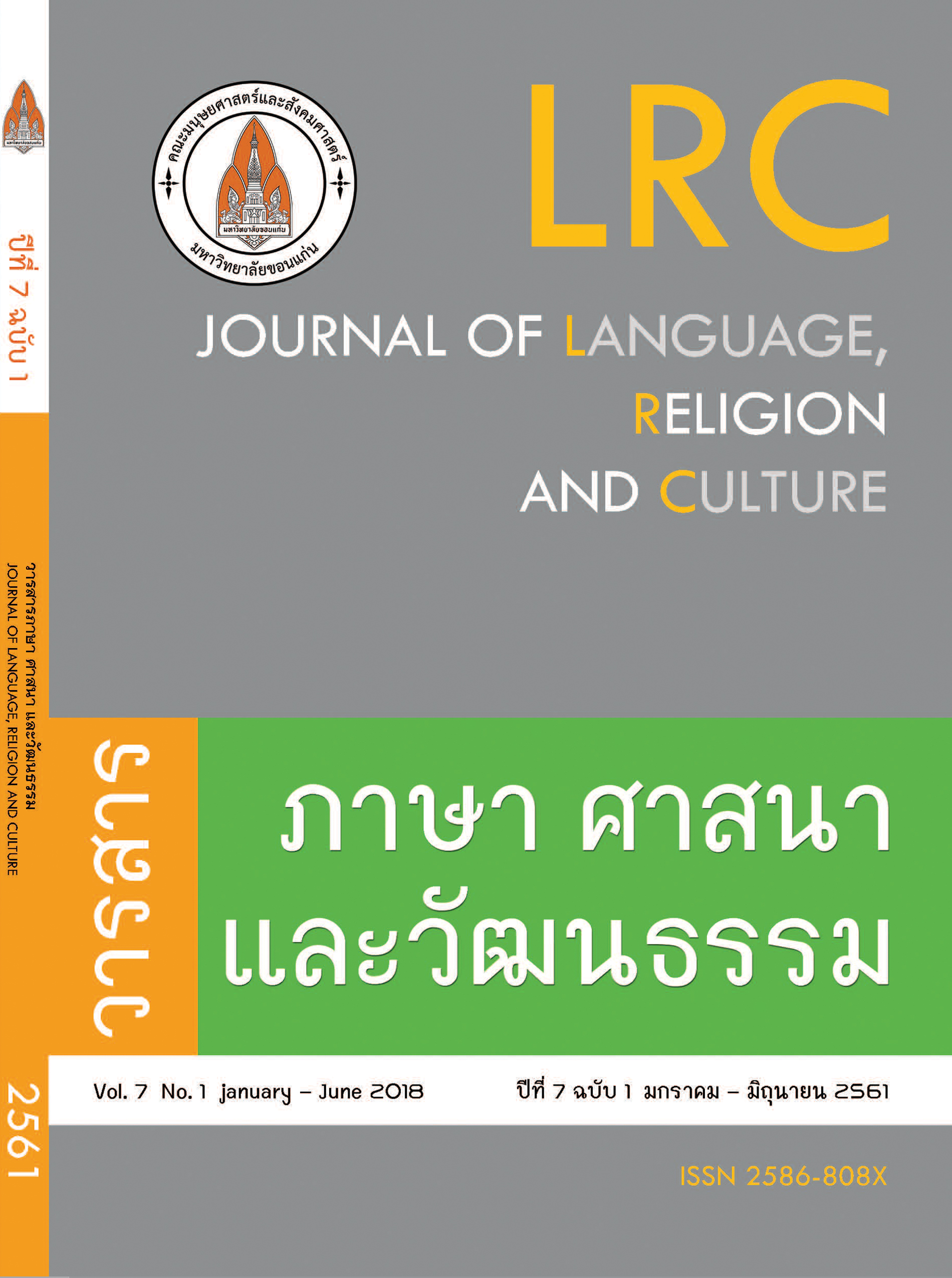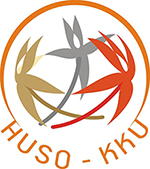คำเรียกสีในภาษาไทยถิ่นอีสาน; Color Terms in Northeastern Thai Dialect
คำสำคัญ:
คำเรียกสี, คำเรียกสีไม่พื้นฐาน, คำเรียกสีพื้นฐาน, ภาษาอีสาน, ขอนแก่น, Color terms, Basic color terms, Khon Kaen, Non-basic color terms, Thai-Isaan languageบทคัดย่อ
บทความเรื่อง คำเรียกสีในภาษาไทยถิ่นอีสาน มีวัตถุประสงค์เพื่อศึกษาคำเรียกสีพื้นฐานและกลวิธีสร้างคำเรียกสีไม่พื้นฐานในภาษาไทยถิ่นอีสาน รวมถึงศึกษาความสัมพันธ์ระหวางคำเรียกสีกับสิ่งแวดล้อม เก็บข้อมูลจากผู้บอกภาษาในพื้นที่หมู่บ้าน
โนนม่วง ตำบลศิลา อำเภอเมือง จังหวัดขอนแก่น โดยการวิจัยนี้ใช้แนวคิดเรื่องคำเรียกสีพื้นฐาน (Basic Color Term) ของ Belin and Kay (1969)
ผลการศึกษาพบ คำเรียกสีพื้นฐานจำนวน 12 คำ ได้แก่ สีขาว สีดำ สีแดง สีเขียว สีเหลือง สีน้ำเงิน สีฟ้า สีน้ำตาล สีม่วง สีส้ม สีชมพู และสีเทา พบกลวิธีการสร้างคำเรียก สีไม่พื้นฐาน 7 วิธี ได้แก่ 1) การนำคำเรียกสีพื้นฐานประสมกับคำขยายที่บอกความเข้มสว่างของสี 2) การนำคำเรียกสีพื้นฐานประสมกับคำเรียกสีพื้นฐาน 3) การนำคำเรียกสีพื้นฐานประสมกับคำเรียกสีไม่พื้นฐาน 4) การนำคำเรียกสีพื้นฐานประสมกับคำเชื่อมและคำเรียกสีพื้นฐาน 5) การนำคำเรียกสีพื้นฐานประสมกับชื่อเฉพาะ 6) การใช้คำเรียก
สิ่งเฉพาะ พืช สัตว์ สิ่งของ มาเป็นคำเรียกสี และ 7) การใช้คำในภาษาอื่นเป็นคำเรียกสี
ส่วนความสัมพันธ์ระหว่างสีกับสิ่งแวดล้อมพบในการสร้างคำเรียกสีไม่พื้นฐาน ซึ่งส่วนใหญ่เกิดจากการเปรียบเทียบกับสิ่งต่าง ๆ ได้แก่ สีของสิ่งที่มีในธรรมชาติ สีของพืช สีของอาหาร สีของสัตว์ สีของอัญมณี และการเปรียบเทียบกับสีของวัตถุสิ่งของในชีวิตประจำวัน
Abstract
This article aims to investigate basic color terms and language devices used to construct non-basic color terms in the local Thai-Isaan dialect (spoken in Northeast Thailand), and to study the relationships between these color terms and the environment. The study was conducted in Non Muang Village, Sila Sub-District, Meuang District, Khon Kaen Province, which was chosen for its as a typical contemporary Isaan village. The research used the concept of basic color terms described by Belin and Kay (1969).
The study found 12 basic color terms, including white, black, red, green, yellow, dark blue, light blue, brown, purple, orange, pink, and grey. Seven language devices were used in constructing non-basic color terms, including 1) mixing basic color terms with modifiers describing the darkness or lightness of the color; 2) mixing two different basic color terms; 3) mixing a basic color term with a non-basic color term; 4) mixing two different basic color terms with a conjunction; 5) mixing a basic color term with an original term; 6) using terms normally used to refer to local plants, animals, or objects; and 7) using words from other languages.
Identifying relationships between the color terms and the environment showed that construction of the majority of non-basic color terms was accomplished through comparing the color with the color of various objects, for example, objects in nature, plants, foods, animals, gems, and objects in daily life.







